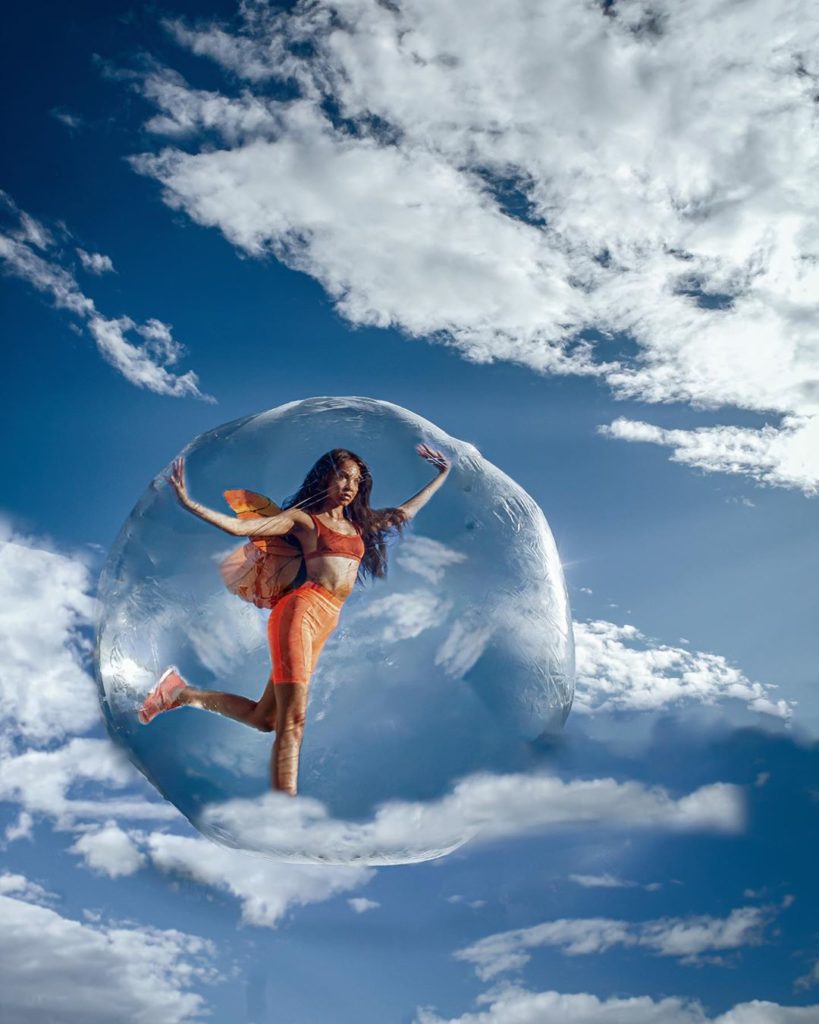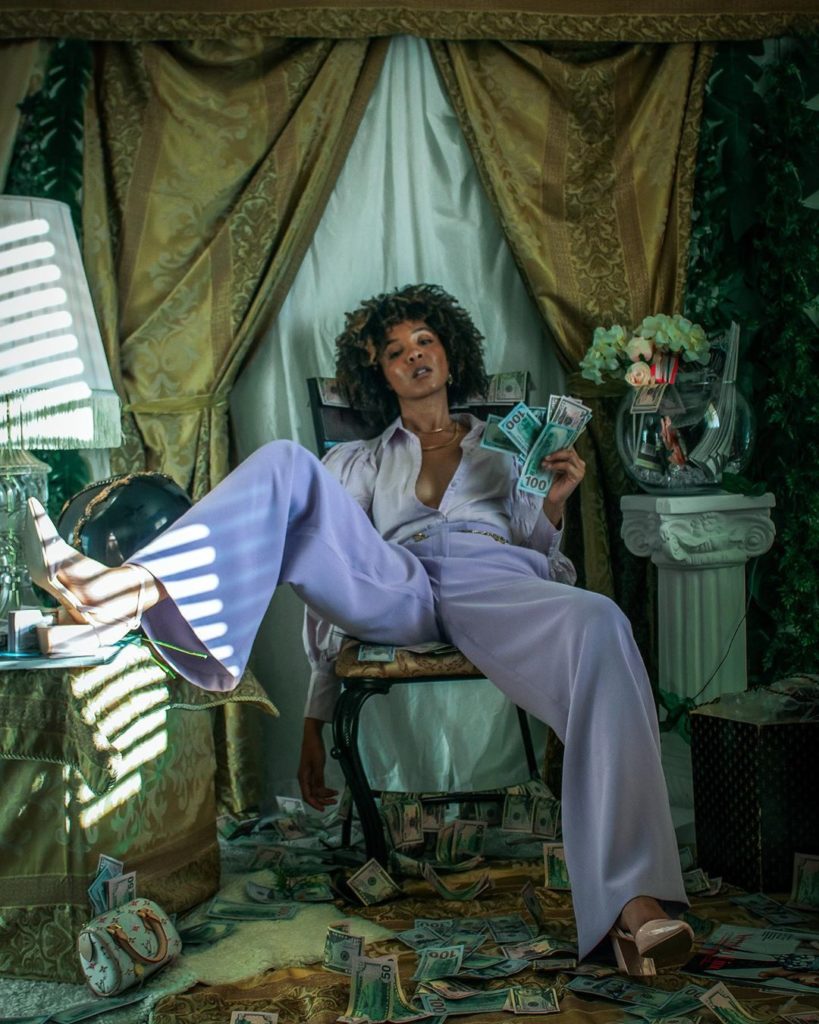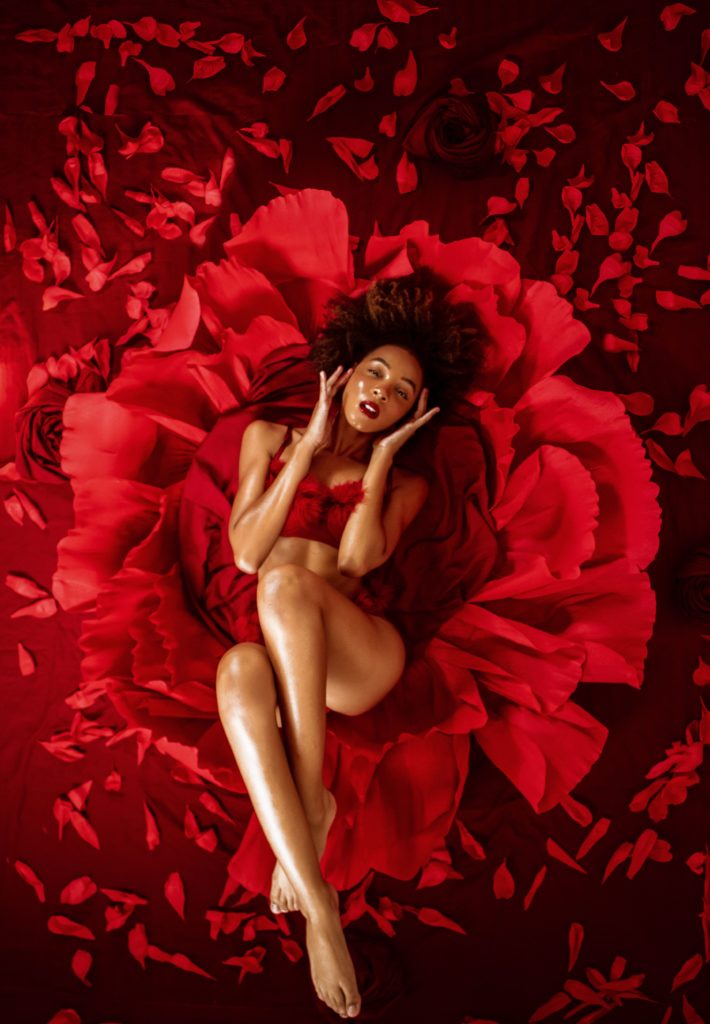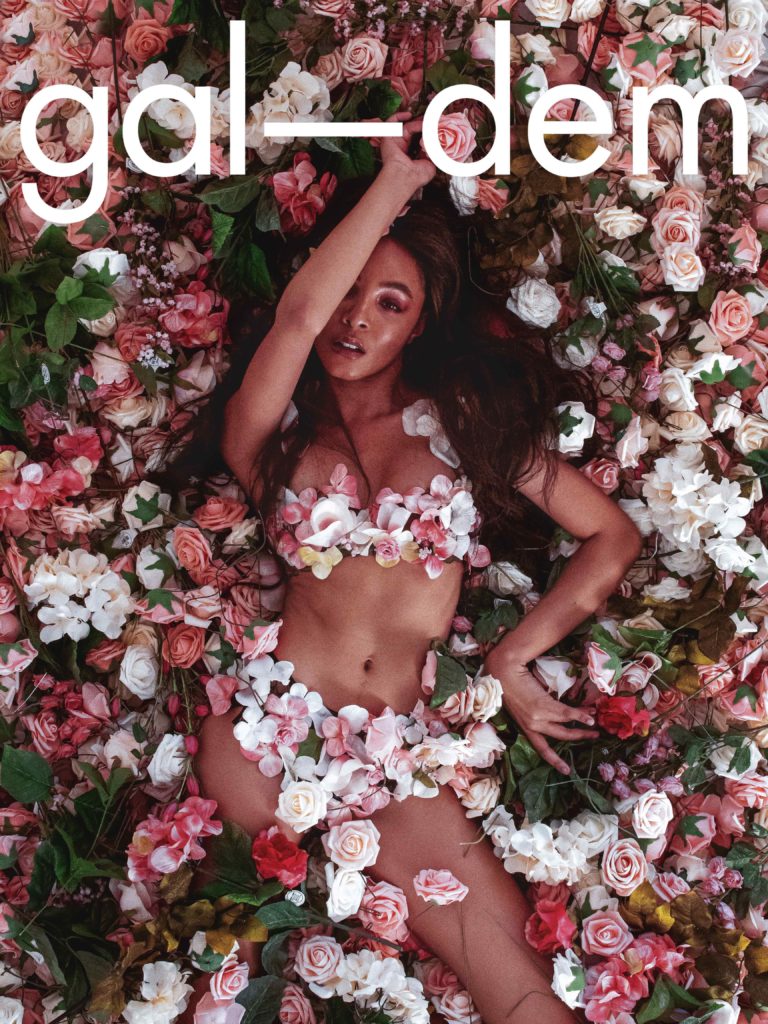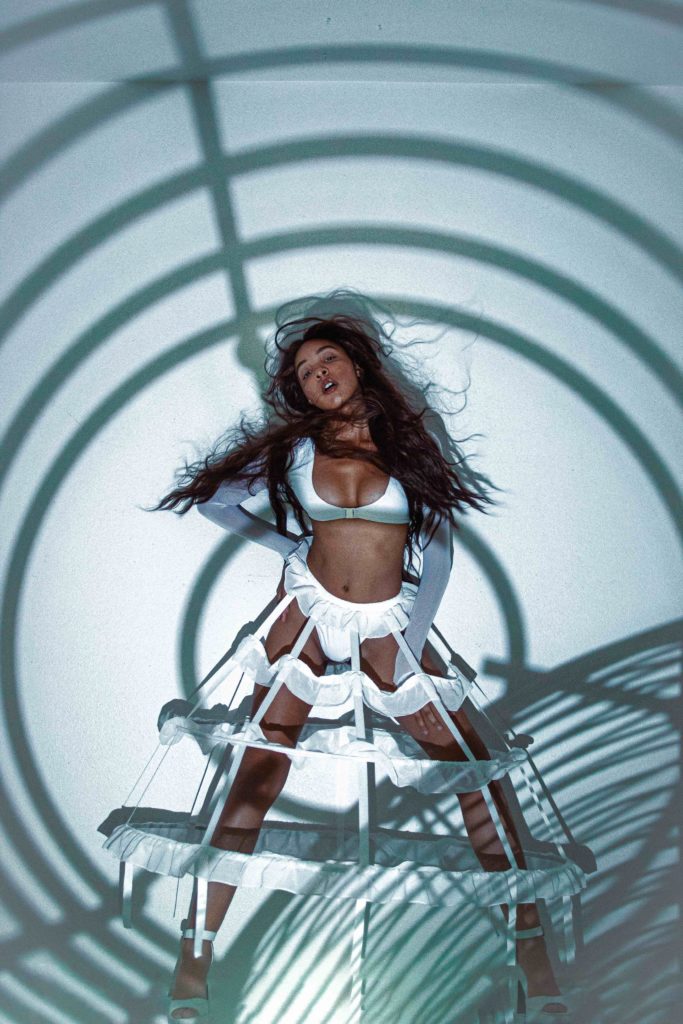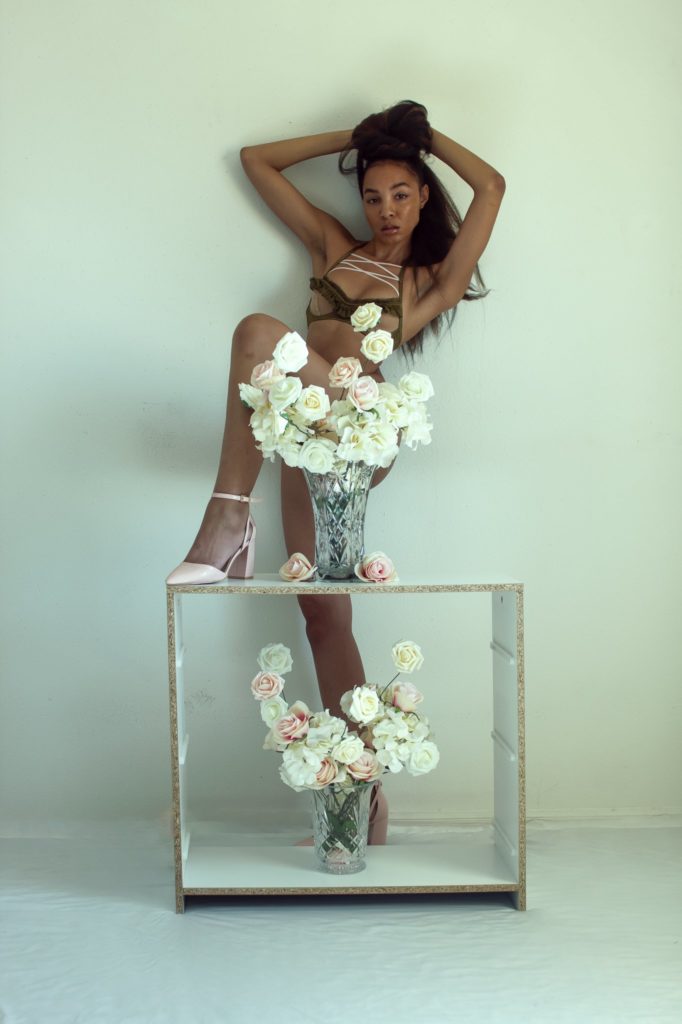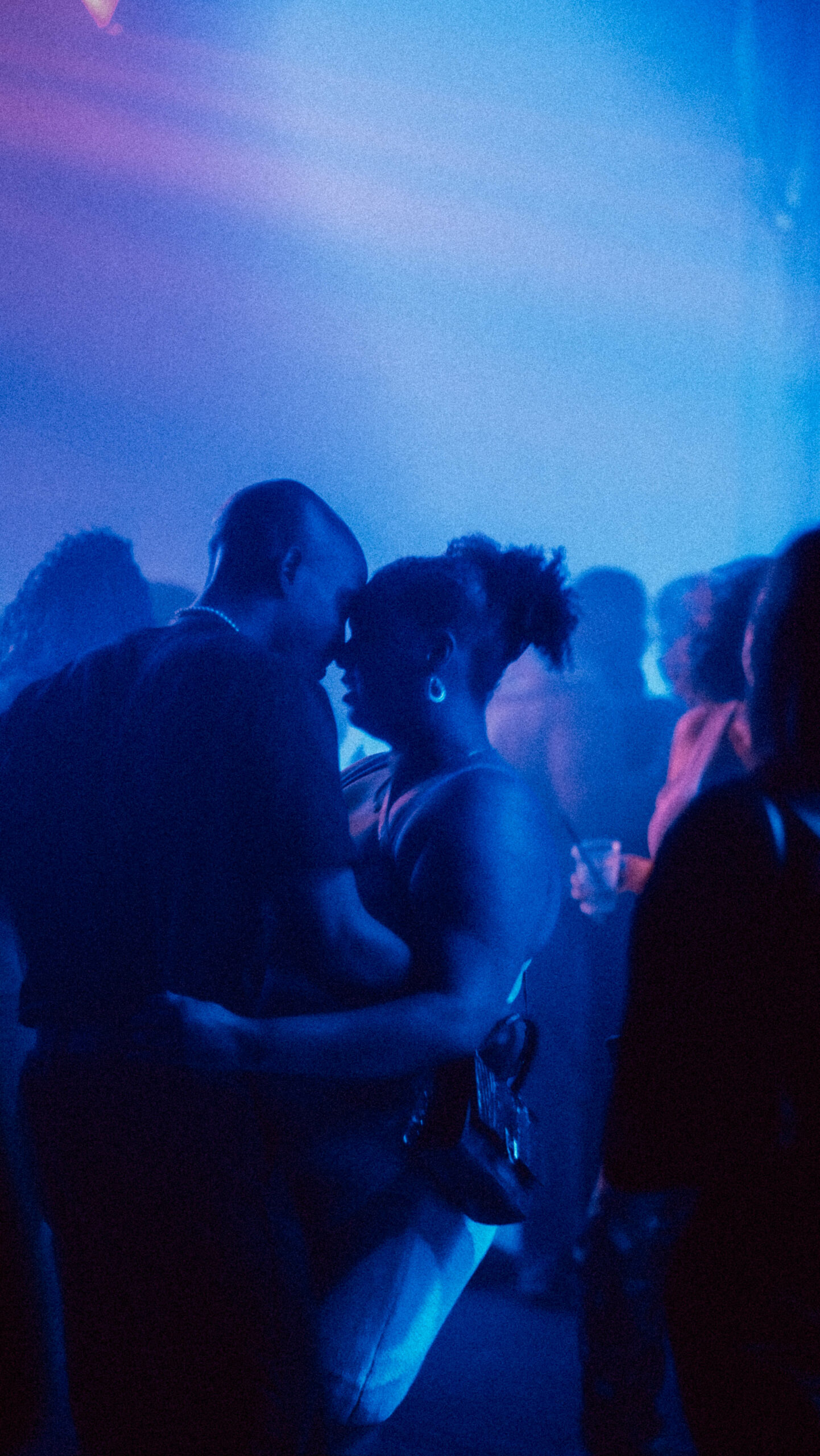
Photography by Kimberly Douglas
Photographer Kimberly Douglas isn’t waiting on the industry to give her the cover star treatment
The self-shooter, model and creative director wants to show you how to do it all on a budget.
Charlie Brinkhurst Cuff
12 Jun 2020
In a small, sparse, Californian country town called Apple Valley, the photographer, model and stylist Kimberly Douglas spends a lot of time alone, basking in introversion. Her life hasn’t changed much in lockdown. It’s in these quiet moments that she dreams up some of her most creative ideas – concepts for self-shoots which might see her floating in a soap bubble in the clouds, lounging on a bed of blush, blooming roses or becoming a statuesque head bust on a plinth. The special thing about Kimberly’s slick shoots is that they are all shot in the comfort of her family home and backyard, using everyday items that, in normal times, you could often grab from a bargain store. Plus, of course, a little bit of Photoshop.
“It started right after college,” the 24-year-old tells me over a video call from her home, not long after the pandemic has started to take its grip around the globe. “I was really bored one day and I put a bunch of books on my bed and put on my old homecoming dress from high school. I had the iPhone 5S at the time and I duct-taped it to the ceiling, set the timer and just took a whole bunch of photos.”
The number of compliments she received for the simple shoot made her realise she was onto something special, and since then, she has amassed thousands of enthusiastic Instagram followers, who wait eagerly for her next array of photos to arrive on the grid and see the steps that made them possible.
For the bubble shoot, for instance, she explained in the caption that she had to stand on top of her outside bin “to get as much sky in the photo as possible” and that she was “dripping in sweat” because she was so hot. Her followers also got to see a picture of the inflatable ball and the ladder she used to create the shoot. It’s an open and honest approach to editorial-style photography that is rare to see and all the more embraced for it.
The main reason Kimberly takes this approach is accessibility. “I want to show people that you can do it at home,” she exclaims. “I just find it so odd that people want to keep things like shoot locations a secret. This is social media – the point is to be social!” She also notes that she just simply doesn’t have the finances to be spending a lot of cash on fancy props and sets. “I don’t want people to think that I’m just making thousands of dollars. I’m not making money like that. Even though I do have a little bit of a following, it’s really hard to work with brands.” When she’s struggling for cash, Kimberly works at food delivery service Postmates (similar to Deliveroo).
“I want to show people that you can do it at home. I just find it so odd that people want to keep things like shoot locations a secret”
Her mantra is to keep it moving; and her ideas for shoots come from anywhere between pop culture and politics. “I get bored if I’m not doing anything. I’m just like, okay, what’s the next thing? That’s what is on my mind right now. I finished that shoot. So, next!” Her favourite recent shoots include a quarantine-inspired shoot inside of a ball, with a can of Lysol (disinfectant) next to her, and a recreation of Bella Hadid’s sultry flower nude shoot. “I felt like I looked so hot. I was like, wow, I look so good. I couldn’t stop taking selfies. And I’m just like, man, if only I looked like this every single day.”
Kimberly is unashamedly ambitious and optimistic. As black women all over the internet have started to Photoshop themselves onto Vogue covers in response to Anna Wintour’s heinous comments about diversity, this is a game she has been playing for some time. Scan through her Instagram history and you’ll see her winking on the cover of i-D, luxuriating on Vogue and laughing in Love. “Like the goal is to one day be able to create and direct and model on the cover of Wonderland Magazine or Love or Vogue – my gosh, that’d be great,” she sighs. In a way, she’s a traditionalist – she loves fashion magazines and has spent plenty of time poring over them, fixating on the glamour, the editorials. But in the same breath, she’s tearing down the insincerity of it all, diversifying it, humanising it.
She is clear on the fact that while she self-shoots, she brings the whole package to each project. “Whenever I do have a photographer that wants to take photos of me, I’m like, ‘Yes!’ because taking photos for me is not my favourite part of it. My favourite part is modelling or doing the conceptual stuff, like the set design.” She pauses to take a breath and then says, “[But] I do love it. I think I’ll always take photos of myself even if… Well no, I’m gonna say even when – even when I make it to where I want to be.”
“The goal is to one day be able to create and direct and model on the cover of Wonderland Magazine or Love or Vogue”
Her story, then, is one tinged with single-mindedness and independence. Her parents, now retirees, don’t have a huge insight into fashion – her dad worked as a truck driver, while her mum was in family services (though she did have a stint making her own clothes). But after high school, and with their complete support, she studied at the Fashion Institute of Design and Merchandising in Los Angeles, waking up every day at 5.15am to drive three hours in, as the college housing was “super expensive”.
She speaks in-depth, but without self-pity, about long days studying, working, and then the 9-5 she picked up after college, and how she tried to stay motivated to do her shoots even when she was tired. “I’d be working Monday through Friday. Saturday I would do my photoshoots. Sunday I would get ready for work the next week and then do it all over again,” she chuckles.
She is conscious of how her race has impacted her approach to self-portraiture and experience within the industry. “Black people have to work twice as hard as the next person. Even if people don’t think they have prejudice or are racist, we’re seeing that it’s ingrained in a lot of people and a lot of law enforcement.” Despite plainly being a spice, glowing skin and all, growing up in a majority white area, she used to wish that she wasn’t black. “I used to think I was ugly. And I hated the way I looked and my natural hair.” In kindergarten, she remembers children not wanting to play with her because she was black, and then in elementary school, one of her crushes said he “didn’t like black girls”.
It was a toxic compendium of incidents, but thankfully, her period of subsequent insecurity didn’t last. “[When I hit my late teens] I grew more confident in the way I looked, the way I presented myself and how I looked in front of the camera,” she giggles. “I was obviously like, ‘Wait! I’m kind of cute’!” It did, however, take her some time to figure out how exactly to make herself look good when taking self-portraits. “Modelling comes naturally to some people but it didn’t come naturally to me. So I had to practice a lot, and I still practice different angles, faces and poses and try to look cool.”
Though she views herself as less of a photographer and more of a creative stylist, she has used the camera to reclaim the parts of herself once lost to insecurities built in childhood. In the autonomy she found through taking her own pictures, and continuing to do so against the backdrop of a fashion industry that hasn’t fully embraced her, she’s carving her own path.
Me, Myself and I is a week-long celebration of self portrait photography focusing on the power of creating art alone.

